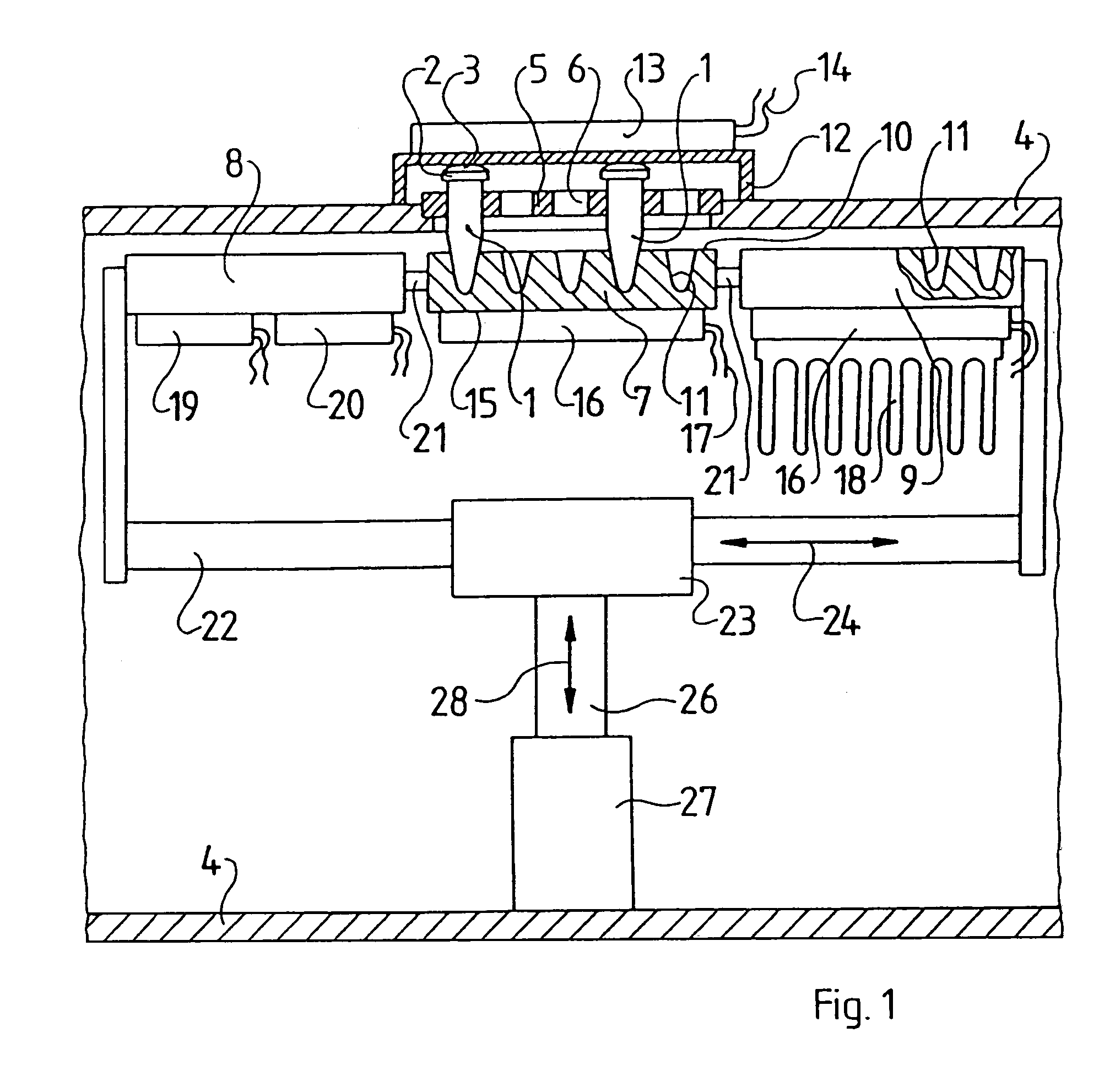Thermostated block with heat-regulating devices
a technology of heat-regulating devices and thermostated blocks, which is applied in the direction of material heat development, instruments, laboratory glasswares, etc., can solve the problems of reducing the thermal impedance affecting the temperature of the thermostated block solely at its ends, and affecting the temperature of the thermostated block at the middle, etc., to achieve a shallow temperature gradient, improve thermal impedance, and improve thermal impedance
- Summary
- Abstract
- Description
- Claims
- Application Information
AI Technical Summary
Benefits of technology
Problems solved by technology
Method used
Image
Examples
Embodiment Construction
[0025]FIG. 1 shows a laboratory thermostat which is especially appropriate for the PCR process. Sample liquids, for instance mixtures of reactions, are to be sequentially set to different temperatures.
[0026]For that purpose, the sample liquids are present in vials 1 which in the embodiment shown are commercial thin-walled plastic reaction vials. Each vial comprises a cylindrical part which, as shown in FIG. 1, tapers conically at its lower end region receiving the sample liquid. The upper edge comprises a collar 2 and an elastically deforming lid 3 closing vial 1.
[0027]The laboratory thermostat shown comprises an enclosing housing 4 receiving at its top side a perforated plate acting as a holder 5 with holes 6 keeping the vials 1 in place and securing the vials at their collars 2 against dropping out of the plate.
[0028]A thermostated block 7 is mounted underneath the holding plate 5 and comprises at its upper side 10, herein called the wells side, wells 11 having shapes correspondin...
PUM
| Property | Measurement | Unit |
|---|---|---|
| temperature | aaaaa | aaaaa |
| temperature | aaaaa | aaaaa |
| temperature | aaaaa | aaaaa |
Abstract
Description
Claims
Application Information
 Login to View More
Login to View More - R&D
- Intellectual Property
- Life Sciences
- Materials
- Tech Scout
- Unparalleled Data Quality
- Higher Quality Content
- 60% Fewer Hallucinations
Browse by: Latest US Patents, China's latest patents, Technical Efficacy Thesaurus, Application Domain, Technology Topic, Popular Technical Reports.
© 2025 PatSnap. All rights reserved.Legal|Privacy policy|Modern Slavery Act Transparency Statement|Sitemap|About US| Contact US: help@patsnap.com



